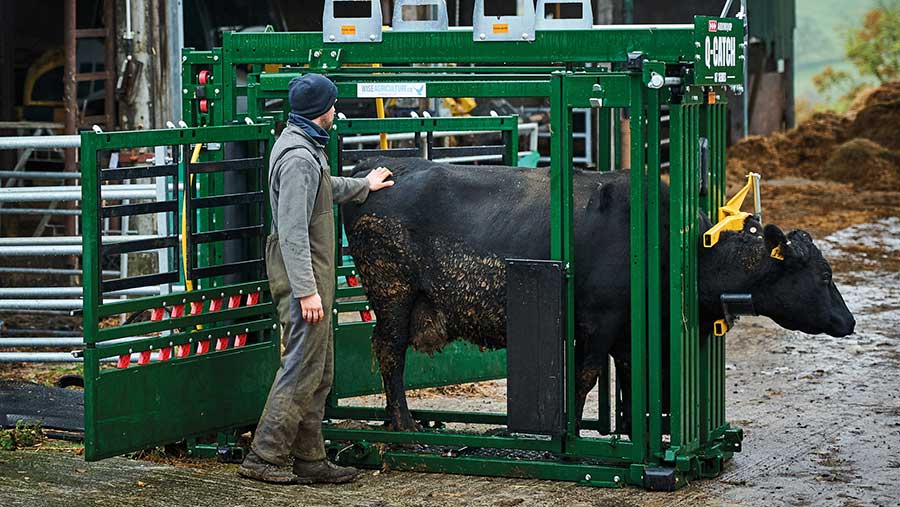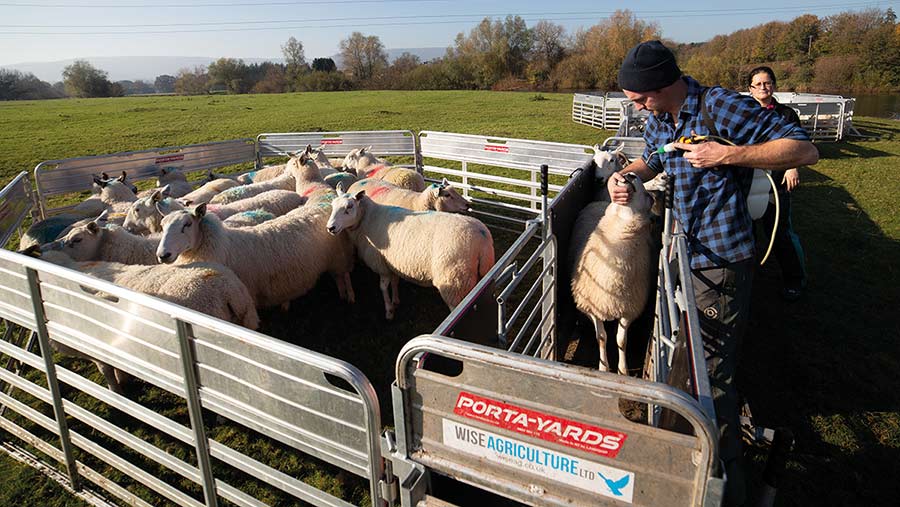6 pitfalls to avoid when buying grant-funded gear
 © Wise Agriculture
© Wise Agriculture Poor rural internet connectivity and a long and exacting series of hoops to jump through can make grant applications for farming equipment a challenging process.
The Farming Equipment and Technology Fund (FETF) (see “FETF scheme”) grant window applies to England only. However, grant schemes across the UK often have similar sticking points.
See also: 3 cattle handling kit options to stay safe at calving
The outline of the process is as follows:
- Apply for grant
- Grant is approved
- Item(s) bought, bank statement and invoice kept
- Item(s) installed and photographic evidence of use submitted to Rural Payments Agency (RPA)
- Payment claim sent to FETFClaims@rpa.gov.uk
- Payment received into bank account registered with the RPA or applicant informed their claim has been unsuccessful
FETF scheme
- Farming Equipment and Technology Fund (FETF) 2023 grant application window closes at 11:59am on 15 June
- Farmers can bid for £1,000-£25,000
Farmers Weekly asked Edward Wise of Wise Agriculture to list the mistakes most commonly made during the application process, and how to avoid them.
1. Not enough cash
Like many grants, the RPA only releases funds once the item is bought, an invoice presented, and a claim form submitted. This can cause problems because the grant might be helping you buy something you otherwise could not afford.
Furthermore, a period of inflation has left many input costs higher than historic levels. For example:
- US plate steel increased from less than £700/t to £1,700/t last year. Prices were at £1,400/t in April
- Freight from New Zealand increased five-fold to £10,000/container in 2021. This has eased since, but not fully
- Domestic freight remains expensive. It costs £450 to transport containers from Teesport 30 miles to the company’s headquarters on specialist transport.
Edward advises farmers to:
- Ensure cash is available to pay for the item so your cashflow remains healthy for the following months until the RPA pays your grant
- Take account of any cash-generating events, such as selling some calves or lambs, or expected costs such as contractor bills or feed deliveries, that might affect your cashflow during this period
- Allow for auditing – grant purchases cannot be made in cash
- Keep all records of receipts/invoices/bank statements as evidence for the claim.
2. Poor organisation
Some applications start badly because people have not got details ready, says Edward.
The RPA advises completing all questions in one setting and not closing the web page until application is submitted. You will need to:
- Identify the business Supply your customer reference number with the RPA, single business identifier (SBI) (which is different to the holding number), email address, business name, business address and postcode, Companies House number (if a limited company) and VAT number (if VAT registered)
- Describe basic details about the business Total hectares of land farmed and managed holdings on your SBI, number of employees, and farm and assurance and livestock health scheme details
- Supply additional information The FETF number for the product(s) you are applying for, date and details of the most recent vet visit to the farm (the date does not affect the success of the application), estimate of livestock numbers, species, sex and age and a county parish holding number the equipment will be used on.
3. Indecision on product

Sheep in portable handing yard © Wise Agriculture
It can be tempting to use grant windows to test the market and window-shop, but this is a poor use of time because the RPA does not require multiple product quotes, says Andrew.
Typically, when grant windows open, dealers are swamped with enquiries, but get very few sales, he explains.
“Item specifications are in the FETF handbook, which is generally easy to follow. However, your dealer/supplier should be able to advise you about which of their equipment does qualify.”
Every piece of equipment that qualifies for an FETF grant has a code that includes a unique number. For instance:
- The code for a 3m portable mobile sheep-handling system is FETF69 and the grant amount is £3,568
- For a head scoop for a cattle crush, the code is FETF62 and the grant amount is £252.
Care should be taken, because getting one digit wrong can result in a very different item – for example, standalone EID readers and weigh heads are FETF67, and EID panel readers permanently fixed to a race or crush are FETF68.
4. Unsuccessful bids
Grant-eligible items are scored by the RPA as a reflection of what it deems value for money. Unsuccessful applications have the lowest score and are rejected when tallied up. For example:
- A manual squeeze crush is worth 87 points and the grant funding is £2,060. A hydraulic crush is worth £4,360 in grant funding, but scores only 62
- EID stick readers are worth 80 points and cost £376 in grant, but a hand-held device only costs the RPA £232, so is worth 85 points.
“If you are applying for a cattle crush, it’s best to apply for a complete package – for example, a crush, head scoop, load bars and an individual electronic weigh system, which will give the applicant a higher score,” says Edward.
5. Poor communication
Industry demand and interest in handling equipment fluctuates hugely, depending on the grant situation at the time, he explains.
“This might mean suppliers and dealers will be less likely to offer individual farmers discounts, but there are things you can do to improve the chances of getting a good deal.”
Whether a grant is available or not, you are more likely to get a deal if you:
- Are transparent with dealers. Tell them you are applying for a grant, as the timeline could be six months or more, rather than days or weeks
- Speak courteously and work on reasonable and extended timelines – do not pressure for a fast sale
- Be flexible with delivery times. Perhaps the dealer could fit it in with another drop and save some costs
- Create a bundle of products to purchase together, as it is more appealing for the dealer to only have one transaction and delivery to organise
- Be realistic about the discount you want to achieve – dealer margins are often tight
- A continued good relationship with your supplier is important to help with future deals. If you stay in touch with the dealer and supply them with contacts and leads for future sales, you can use this to negotiate on future deals.
6. Failure to follow through
If successful, the RPA will send a grant funding agreement and claim form. Farmers must conclude the process by:
- Going online to the Animal Health and Welfare portal and accepting the funding offer
- Purchasing and installing equipment (only after accepting the funding offer)
- Uploading photographic evidence of the item being used to the RPA website – for example, sheep in a mobile handling unit
- Some businesses that finish store lambs in winter may not have lambs on farm in summer, so they cannot provide immediate photographic evidence. This may need explaining and may result in a longer wait for the grant to be paid
Bear in mind that it can still take several weeks for the grant funding to arrive in your bank account after submitting a correct claim form.
